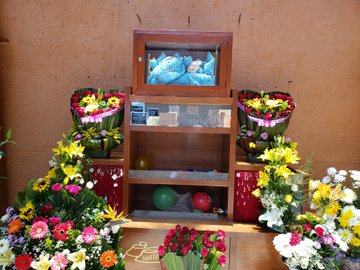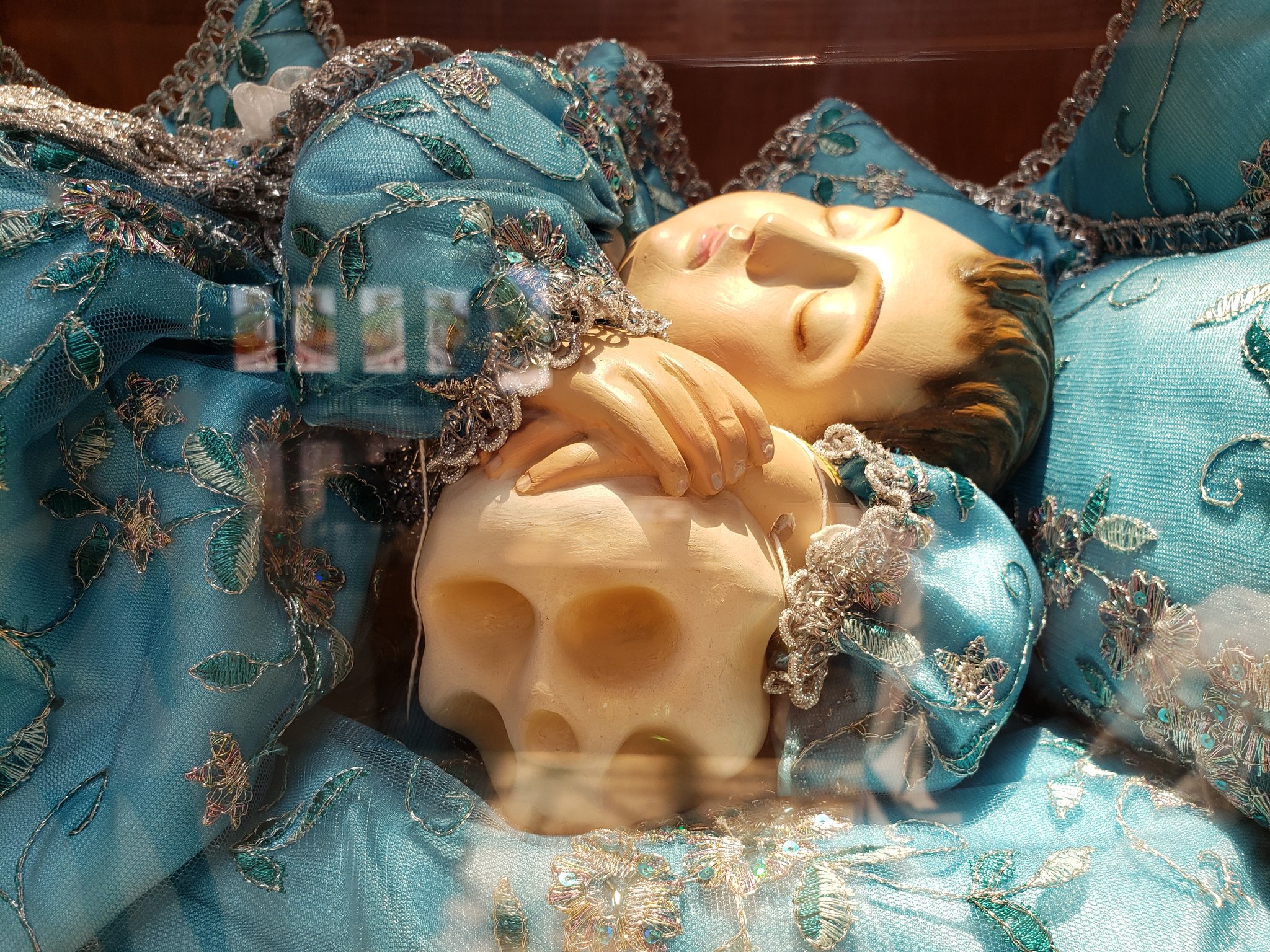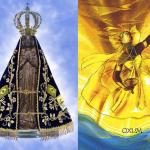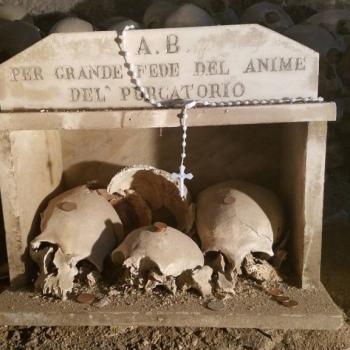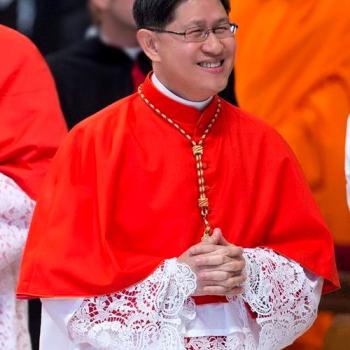
Having researched the Mexican skeleton saint Santa Muerte for the past decade I am quite accustomed to death imagery. However, when I first came across a photo of the Holy Child of Raffles (el Santo Niño de las Suertes) I was taken aback. As a specialist in Latin American religion I am used to seeing the myriad advocations of the Christ Child. There’s el Niño Doctor wearing a doctor’s smock who as one might imagine is most often beseeched for miraculous cures. Then there’s the heretical folk saint who holds a 5 gallon gas can in one hand and a siphon in the other. Holy Child Huachicolero serves as the the spiritual patron for Mexican gasoline thieves and was recently rebuked by the Archbishop of Puebla for being “worse than Santa Muerte.”

But not even the initial shock of seeing the Holy Infant with a gas siphon in his hand prepared me for the sight of the Christ Child reclining his head on a hard human skull instead of a fluffy pillow. The childish innocence and doll-like cuteness of the Christ Child genre is retained here but unexpectedly juxtaposed with the most common memento mori – a human cranium. Catholics of course are most familiar with the death imagery of the adult Christ crucified on the Roman instrument of torture, the cross. But the Holy Infants of Prague and Atocha, among all the others, with their radiant countenance and baby fat evoke vibrant young life with no hint whatsoever of impending death and resurrection. So how to explain this unique Mexican advocation of the Christ Child in which the innocence of childhood is juxtaposed with the stark reality of death?

Let’s take a look at the origin story of the Holy Child of Raffles. In Mexico City in 1806 two priests were strolling through the district of Tlalpan when they suddenly heard the cry of a child. Disconcerted they began to look for the child and in a vacant lot discovered a small image of the Christ Child sleeping peacefully on top of a human skull. As they approached the strange image a natural spring gushed forth water and was subsequently baptized “the Eye of the Child” (el Ojo del Niño) currently located on the grounds of the Salesian seminary.

Thrilled by their discovery, the priests took the image to the archbishop who upon contemplating the Christ Child praised God for His mercy. At first the archbishop thought about giving the image to the nuns at a local monastery but after consulting with the city council he decided to hold a raffle in which God would choose the lucky recipient of the image of the Christ Child. The convent of Conceptionist Nuns of Saint Bernard won the raffle. However, cognizant that maintenance of the image could be a financial burden for the impoverished convent, the archbishop held a second raffle, which was again won by the Conceptionist sisters.

Convinced the Conceptionists couldn’t properly care for the miraculous image, the archbishop conducted a third drawing, this time without the name of the Conceptionists on a slip of paper. Not only did the lucky nuns win for a third time but had the name of their convent printed in gold, a sign from God which the archbishop could not ignore. The sisters were overwhelmed by the joy of winning such a gift from Heaven in the miraculous raffle to the extent that the Mother Superior decided to name the image el Santo Niño de las Suertes (Holy Child of Raffles). Since then the Conceptionist sisters have been the caretakers of the unique image and promoters of devotion to the Christ Child.

Since 2010 veneration of the Christ Child primarily takes place at his hangar-like shrine in the district of Xochimilco. While devotees petition the Holy Child of Raffles for miracles of all sorts, they seem to seek his divine assistance especially in three matters – health, fertility, and befitting of his origins, luck in the lottery. In fact, one of the highlights during his annual feast day celebration on the second Sunday of January is the raffling of an image of the Holy Infant to a lucky devotee.
As the skull upon which the baroque image of the Holy Child rests evinces his Holy Death, this has attracted a considerable number of devotees of the Mexican death saint, Santa Muerte, which translates to English both as Holy Death and Saint Death. While some Mexican devotees prefer to regard the Skeleton Saint as the latest manifestation of Mictecacihuatl, the Aztec death goddess, the very origin of the female folk saint’s name, Santa Muerte, is the Holy Death of Christ, which in Mexico used to be reenacted at Holy Week processions with effigies of the Grim Reapress (la Parca) personifying the Holy Death of Christ. The archdiocese of Mexico City has become so concerned about the (mis)appropriation of the Holy Child of Raffles that it has issued public admonitions to parishioners in the days preceding Candlemas Day not to dress images of the Holy Infant in offensive ways, including as Santa Muerte. But of course the Holy Child of Raffles doesn’t need to wear the garb of a Skeleton Saint to remind us of the inextricable relation between life and death.
All photographs were shot by Fabiola Lopez-Chesnut and Dr. Andrew Chesnut.


